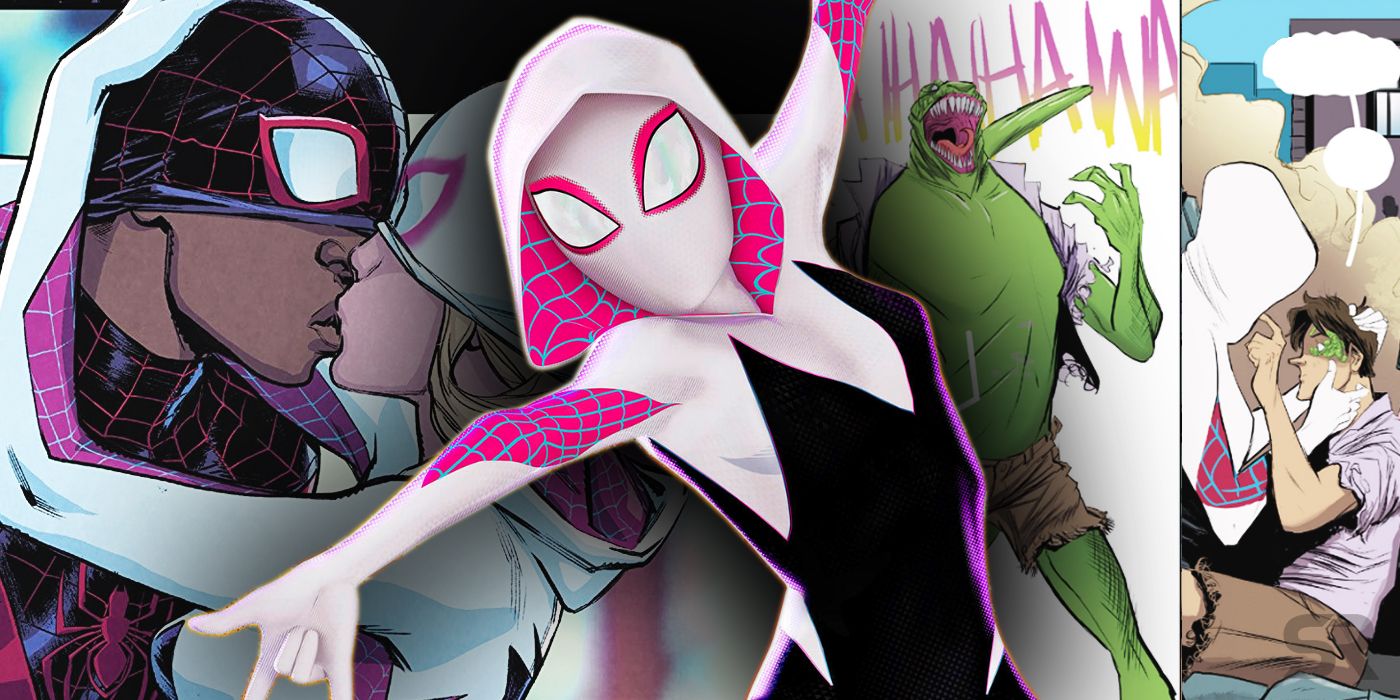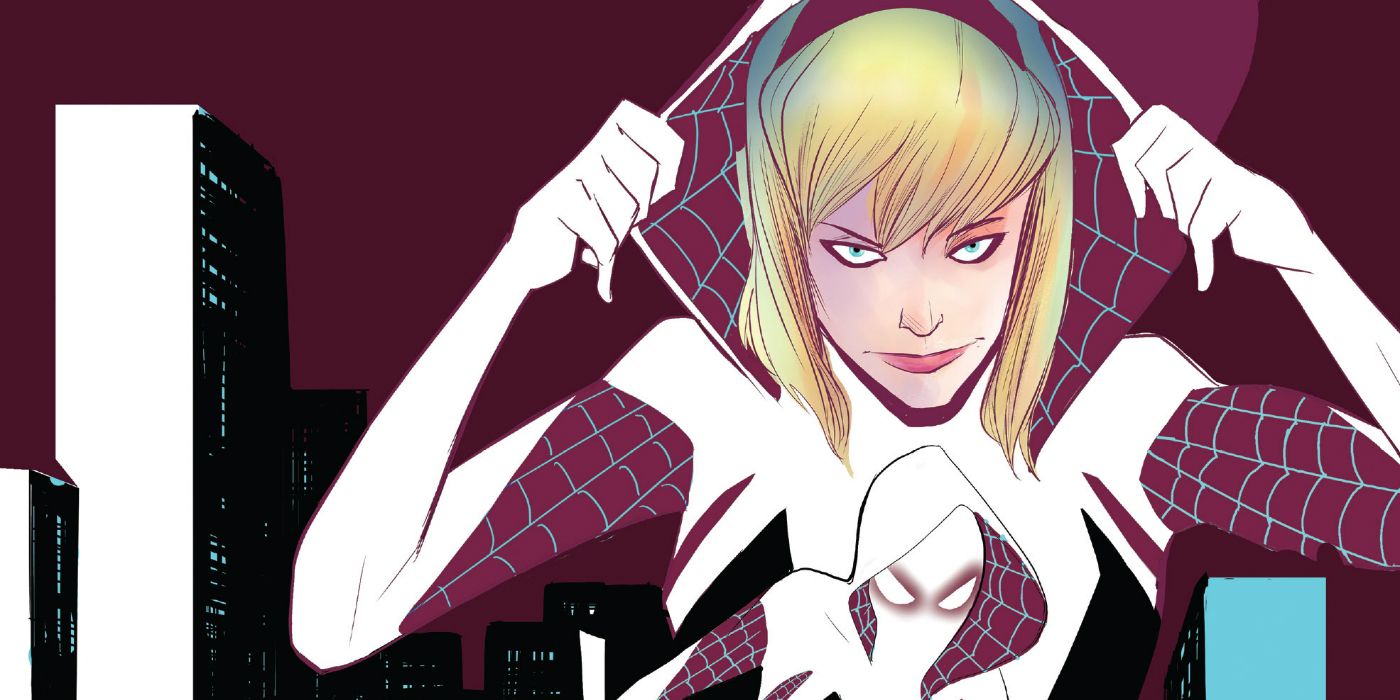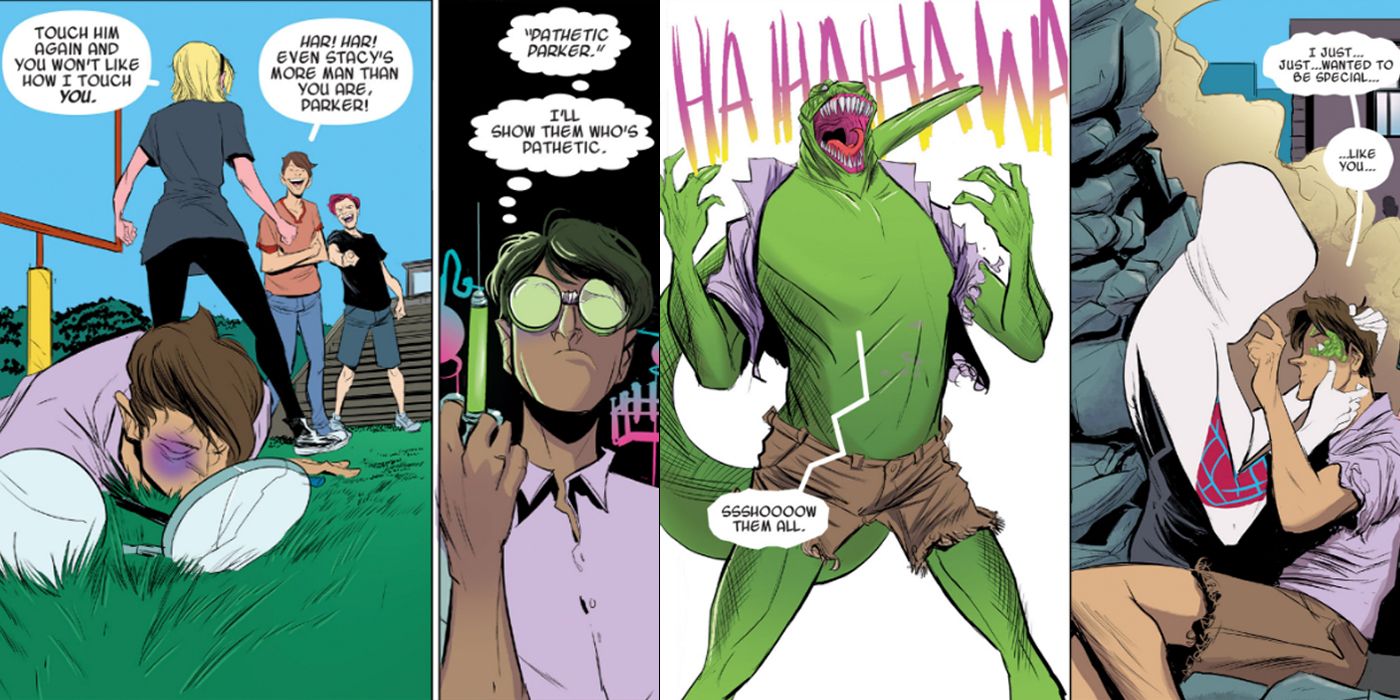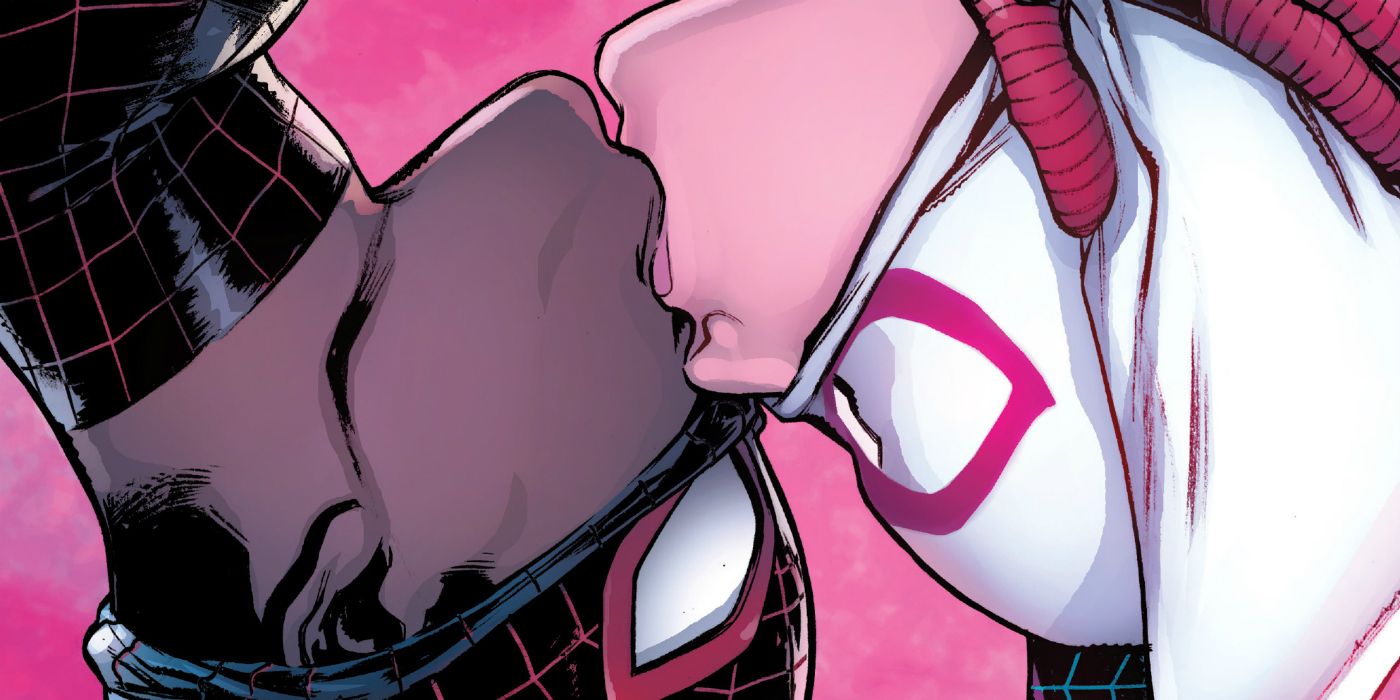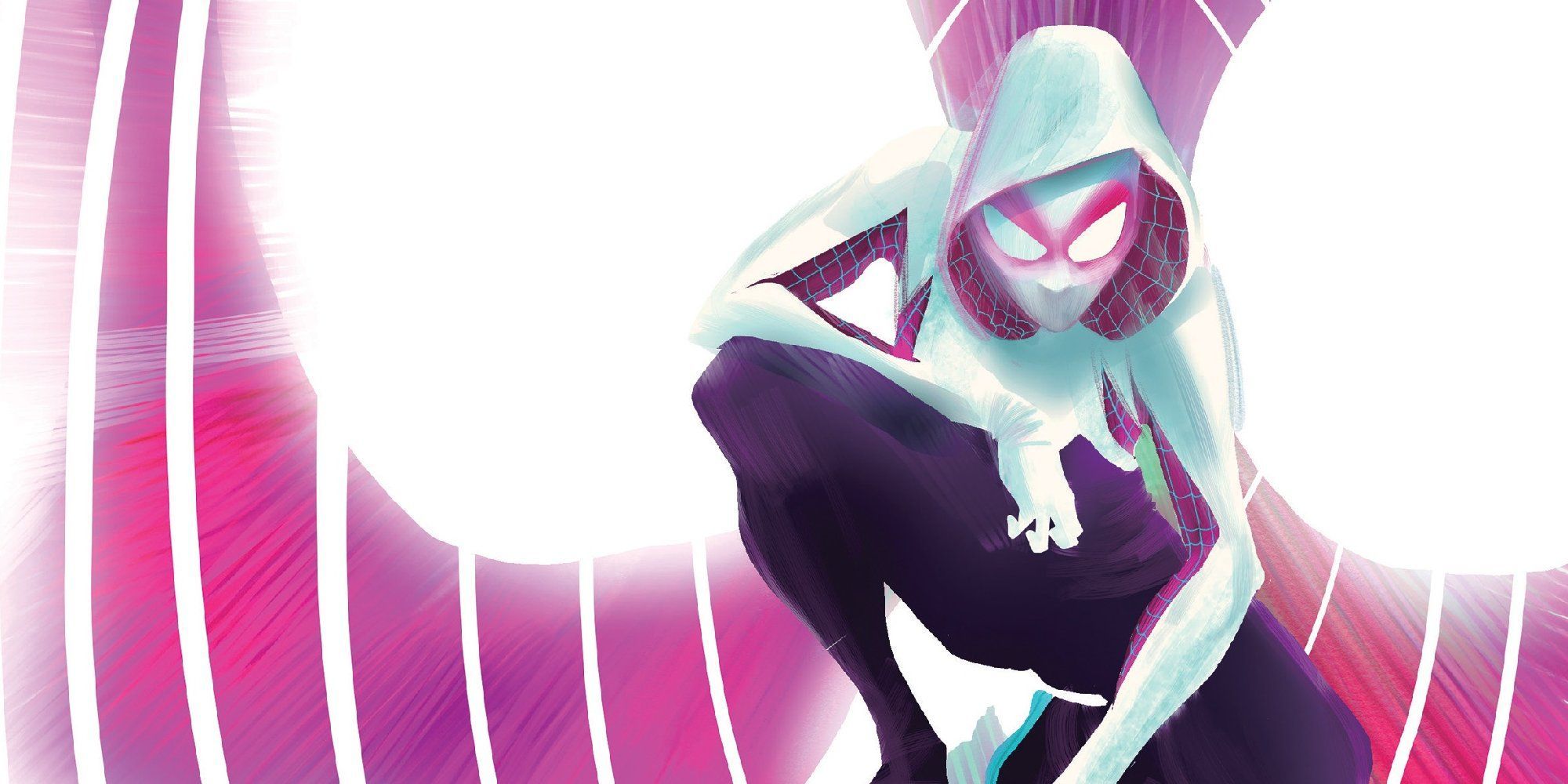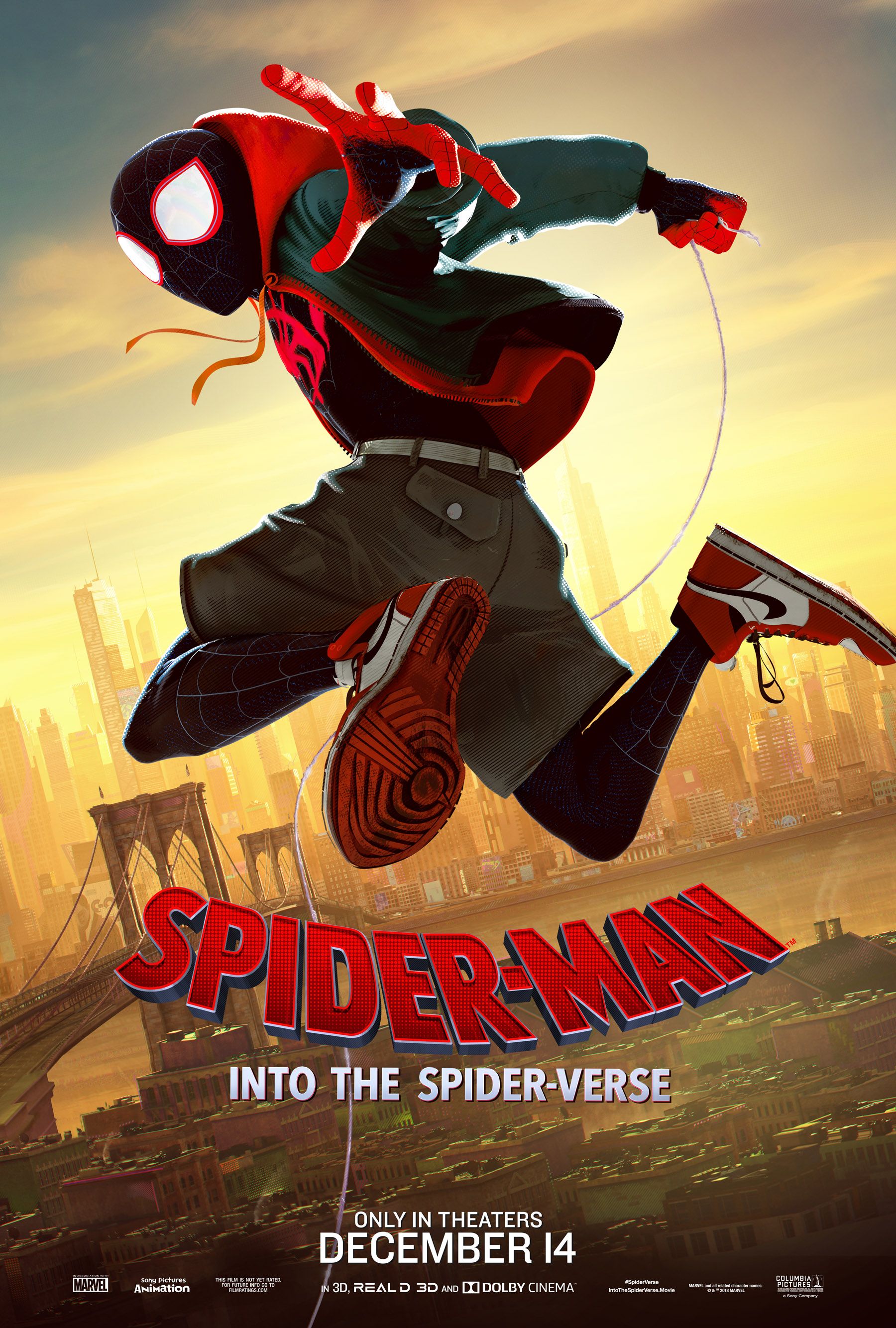Spider-Man: Into The Spider-Verse is the big-screen debut of Spider-Gwen, voiced by Hailee Steinfeld. For most general viewers, this will be the first time they've ever encountered the superpowered version of Gwen Stacy. After all, even in the comics she was only created in 2014; it's frankly quite impressive that the superhero is playing such a prominent role in an animated movie so soon after she was introduced to the comics.
Spider-Gwen originates from an alternate dimension in which Gwen Stacy was the one bitten by that famous radioactive spider. In the comics, Gwen was a girlfriend of Peter Parker's who died at the hands of the Green Goblin back in 1973. Emma Stone played the part in Sony's Amazing Spider-Man films, and Marvel Comics decided it would be smart to capitalize on her increased exposure. They were currently working on the plans for a dimension-colliding arc called "Spider-Verse," which gave Marvel's writers and artists a chance to create all-new incarnations of Spider-Man. Spider-Gwen was the breakout star, named by fans on Twitter when they saw Robbi Rodriguez's stunning design.
Related: Spider-Man: Into the Spider-Verse Review
But just who is Spider-Gwen? If Marvel and Sony are right, then this is a hero with the potential to be an absolute hit. Here, we'll guide you through everything you need to know about Spider-Gwen from the comics themselves.
- This Page: Spider-Gwen's Comic Origins (& Movie Changes)
- Page 2: Spider-Gwen's Future In The Comics & Movies
Spider-Gwen's Origin Story
In 2014, Marvel launched the Edge of Spider-Verse miniseries. Each issue had a different creative team, who were allowed to create a whole new version of Spider-Man, and writer Jason Latour and Robbi Rodriguez were asked to create Spider-Gwen. They had an absolute blast, and chose not to do a straightforward origin story. Instead, Latour and Rodriguez explored Spider-Gwen's history in a stunning two-page "Previously" spread. That told a brilliant riff on the classic Spider-Man story; it revealed that this was a world in which angsty teen drummer Gwen Stacy was bitten by a radioactive spider, and initially took on the Spider-Woman identity in an attempt to get an adrenaline buzz (the "previously" flash in Spider-Man: Into The Spider-Verse is heavily inspired by Latour and Rodriguez's approach, and even reproduced some of the art from that page).
In the case of Spider-Gwen, though, it's not really the backstory that made her work; it was Robbi Rodriguez's design. Indeed, it was only when his design went viral on Twitter that Marvel began to realize they had a hit on their hands. The costume was complimented as one of the best in the last 30 years' worth of comic books. When the comic itself actually came out, it was a work of art. Edge of Spider-Verse #2 had an electric color palette, asymmetrical hairstyles, and brilliantly sketched backdrops. Colorist Rico Renzi did an incredible job, capturing both the Forever 21 spinner rack and the rock-and-roll excess of the 1980s. Spider-Man: Into The Spider-Verse draws deliberately upon some of the classic images from the comics, including one scene in which Gwen Stacy - out of costume - is beating the drums. Attentive viewers will even notice the trademark Rodriguez style in the way sound effects play out on the screen in the movie.
Peter Parker Is Spider-Gwen's Lizard
Of course, every version of Spider-Man must somehow learn the same painful lesson: "With great power comes great responsibility." In a tragic irony, Spider-Gwen learned that lesson through the death of one of her closest friends - Peter Parker. Gwen's childhood friend fell in love with the idea of Spider-Woman. He burned with a desire to be special, like her; to have the freedom to do what he wanted, to never be bullied again, to be loved and praised. That desire turned into a drive to find a way to gain powers of his own, and he created an experimental super-soldier formula. Unfortunately, it went horrifically wrong; Peter became the Lizard, his mind subsumed beneath a savage reptilian brain, and he went on a rampage. He was opposed by Spider-Gwen, who thought she was fighting a mindless monster; she killed the Lizard.
Related: Why Spider-Man: Into The Spider-Verse's Green Goblin Looks Different
Spider-Gwen learned the truth when the dying Lizard morphed back into the form of a battered Peter Parker. She was left heartbroken, realizing at last that she had a responsibility to use her powers wisely. That lesson sadly came a little too late; Spider-Gwen became a wanted criminal, blamed for Peter Parker's murder. Careful to protect her friend's reputation, she accepted the blame rather than let the world know Peter himself was the mysterious Lizard that had savagely attacked the city. In a painful but ironic twist, the police detective charged with catching Spider-Gwen was her own father, George Stacy.
Page 2 of 2: Spider-Gwen's Future In The Comics & Movies
The Relationship Between Spider-Gwen And Miles Morales
Spider-Man: Into The Spider-Verse clearly shows that Gwen and Miles like each other quite a bit; there are plenty of sparks, and there's even a brief near-kiss that turned into a handshake. This "near-relationship" is indeed lifted straight from the comics, where the two spiders were very much aware of each other for quite some time. They got together at last in a crossover event appropriately called "Sittin' In A Tree," which saw them finally make out a couple of times. Their relationship was complicated a lot when the couple stumbled upon their future selves - married and with Spider-powered kids. Unsurprisingly, that added a lot of pressure to the relationship, and Miles and Gwen decided to take things slowly.
The two heroes share the ultimate long-distance relationship, crossing dimensions to see one another every now and again for an occasional date. As a result, many of Miles' fellow teen superheroes don't believe he has a girlfriend at all; in fact, Ms. Marvel is the only one who's seen them together, and she's more than a little worried that Spider-Gwen will break Miles' heart. At the moment, it's unclear whether the pressure of trying to become the couple they saw in the future will prove too much for the dimension-crossed Miles and Gwen.
Spider-Gwen's Future
Spider-Gwen was the breakout star of 2014's "Spider-Verse" event, and it's a testimony to the character's popularity that - four years later - she's the lead hero in her own ongoing comic book series. The character has proved to be highly marketable, with a whole range of merchandise associated with her, ranging from a Marvel Legends 6" figure to a Harley Davidson Spider-Gwen-themed motorcycle. She's been adapted into several of Marvel Animation's shows, voiced by Laura Bailey in Spider-Man and by Dove Cameron in Ultimate Spider-Man and Marvel Rising: Secret Warriors. There's no sign that her popularity is diminishing.
Related: Sony's Three Spider-Man Movie Universes Explained
Sony reportedly became interested in Spider-Gwen as far back as 2014, when the #SpiderGwen hashtag first began to go viral. Unfortunately, at that stage their plans were complicated somewhat by the fact they'd just killed off Emma Stone's Gwen Stacy in The Amazing Spider-Man 2, so there was no way to develop that idea in a live-action form. Instead, Spider-Gwen has found her way into Sony's first animated Spider-Man movie, (very) loosely inspired by the "Spider-Verse" comic book event. There have since been reports that Sony is now planning an all-female spinoff from Spider-Man: Into The Spider-Verse, with Spider-Gwen believed to be the main character. The studio is in talks with Lauren Montgomery (Voltron, Batman: Year One) to helm the project. That means the future is bright for Spider-Gwen in every medium.

